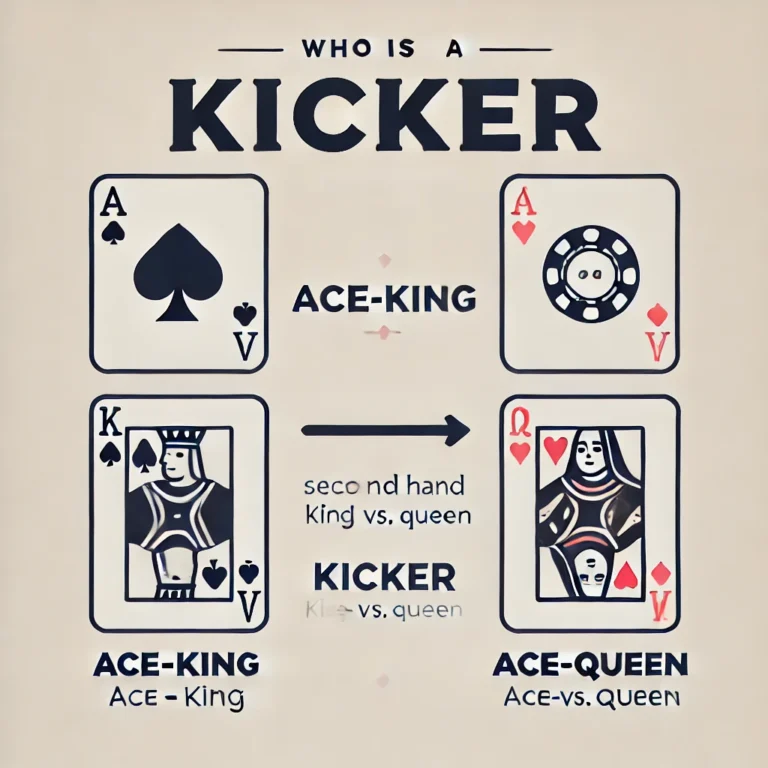High-stakes poker is the pinnacle of competitive poker playing, drawing experienced players who are confident in their strategy, game theory, and psychological tactics. While the stakes are sky-high, learning how to play high-stakes poker is not out of reach, even if you’re starting at lower limits. The key is to approach it step by step, mastering the foundational skills and gradually building up to the high-pressure world of big-money pots.
In this guide, we’ll break down easy steps to get you on the right path toward playing high-stakes poker successfully.
Master the Fundamentals of Poker
Before jumping into high-stakes games, you need to have a firm grasp of poker fundamentals. Whether you’re playing Texas Hold’em or Omaha, knowing the basic rules, hand rankings, and gameplay is essential.
Key Fundamentals to Understand
- Hand Rankings: Know which hands beat others. For example, a flush beats a straight, and a full house beats both.
- Betting Rounds: Understand when and how to bet, raise, call, or fold during pre-flop, flop, turn, and river stages.
- Positioning: Position is critical in poker, especially in high-stakes games. Acting later in the round gives you more information about your opponents’ hands and strategies.
If you’re not comfortable with the basics, start with lower-stakes games to practice and refine your skills.
Understand Bankroll Management
Bankroll management is one of the most critical aspects of becoming a high-stakes poker player. Playing at high stakes means risking more money per hand, and without proper bankroll management, you could face significant losses.
Tips for Bankroll Management
- Set a Limit: Only play with money you can afford to lose. A common guideline is to have at least 100 buy-ins for any given stake you want to play at.
- Gradually Increase Stakes: Don’t jump into high-stakes games right away. Start by moving up in stakes incrementally as you become more comfortable with the higher amounts.
- Avoid Tilt: Emotional control is essential. If you’re on a losing streak, take a break. Chasing losses often leads to bigger losses.
Developing discipline with your bankroll is what keeps many high-stakes players in the game long-term.
Study High-Stakes Strategies
High-stakes poker is not just about understanding the game’s basics—it’s about mastering advanced strategies that differ from lower-stakes play. When the money at the table is significant, players become more sophisticated in their approaches, and you’ll need to adapt.
Common High-Stakes Poker Strategies
- Aggression: High-stakes games tend to reward aggressive players. Knowing when to raise, bluff, or go all-in is key. A passive strategy will rarely succeed.
- Bluffing Smartly: Bluffing becomes much more nuanced at higher stakes. Players at this level are better at reading hands and will spot weak bluffs. Make sure your bluffs are credible and based on strong reads.
- Hand Reading: High-stakes players often rely on hand-reading skills to put their opponents on a specific range of hands. This allows them to make more informed decisions.
Reading up on advanced poker strategy books, watching training videos, or reviewing hand histories of high-stakes games can provide valuable insights into these strategies.
Develop Psychological Resilience
At the high-stakes tables, the pressure is immense. You’re not just playing for significant sums of money but also competing against some of the best players in the world. The mental game becomes just as important as the cards you’re holding.
Tips for Building Mental Toughness
- Patience: High-stakes games often require long sessions and extended periods of folding or waiting for the right hand. Impatience can lead to reckless decisions.
- Emotional Control: It’s easy to get frustrated after a bad beat, but you need to maintain emotional control to avoid going on tilt.
- Confidence: You’re going up against players who will test your resolve with big bluffs and aggressive bets. Trust in your reads and decisions, even if the pressure is on.
A huge part of success in high-stakes poker is how well you can handle the mental stress of the game. Meditating, keeping a cool head, and focusing on the process rather than the money are great ways to build resilience.
Analyze and Review Your Games
Continuous learning is crucial in poker, especially at higher stakes. After every session, take the time to review key hands and analyze your play. This will help you identify any mistakes you made and areas for improvement.
How to Review Your Poker Play
- Hand History Tools: Use poker software like PokerTracker or Hold’em Manager to review hand histories, track your win rates, and analyze opponents’ tendencies.
- Join a Poker Community: Consider joining a high-stakes poker forum or a study group. Learning from other experienced players and sharing hand analyses can offer valuable feedback.
- Watch Pros: Watching high-stakes poker on platforms like Twitch or YouTube can help you see how the pros approach certain hands and situations. Take notes and see how you can incorporate similar strategies into your play.
Learn Table Selection
In high-stakes poker, table selection can be a game-changer. While you may be eager to test your skills against the best in the world, it’s often more profitable to play against weaker opponents. Finding the right table where you have a skill advantage can increase your win rate.
Table Selection Tips
- Look for Soft Spots: Identify players who are weaker or more inexperienced, even in high-stakes games.
- Observe the Dynamics: Before sitting at a high-stakes table, spend time watching how the players interact. Are they aggressive, passive, or on tilt? Use this information to pick the right seat.
- Avoid Ego Battles: High-stakes poker is not the time for ego. Play smart and avoid challenging opponents just to prove a point.
Embrace Variance
High-stakes poker comes with greater variance. You may experience huge swings, both up and down. Understanding and accepting this is crucial to maintaining your sanity and longevity in the game.
How to Handle Variance
- Keep Perspective: Understand that even the best players experience downswings. Stay focused on the long term and trust your process.
- Stay Bankrolled: Proper bankroll management will protect you from going bust during inevitable losing streaks.
- Emotional Balance: Stay level-headed during both wins and losses. Celebrating too hard after a big win or sulking after a loss can cloud your judgment in future games.
Becoming a High-Stakes Poker Player
Learning how to play high-stakes poker is a journey that requires patience, dedication, and a willingness to continuously improve. Start by mastering the fundamentals, develop your bankroll management skills, and gradually introduce yourself to high-stakes strategies. Stay disciplined, analyze your play, and don’t be afraid to step away when things aren’t going your way. With time, you’ll find yourself more comfortable at the high-stakes tables, ready to compete with the best.
Our team Whalefish belibve that the road to high-stakes poker success is long, but by following these steps, you can steadily build the skills and mindset needed to thrive in this exciting, fast-paced world.











